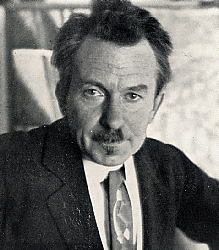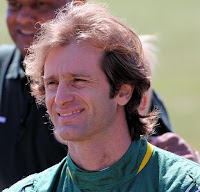Work captured light, movement and speed
 |
| Giacomo Balla's work Le mani del violinista - The Hands of the Violinist - stemmed from his fascination with movement |
An art teacher who influenced a number of Italy’s most important 20th century painters, Balla became interested in the Futurist movement after becoming a follower of the poet Filippo Tommaso Marinetti, who is regarded as the ideological founder of Futurism.
Futurism was an avant-garde artistic, social and political movement. Its ethos was to embrace modernity and free Italy from what was perceived as a stifling obsession with the past.
Balla was one of the signatories of Il manifesto dei pittori futuristi - the Manifesto of Futurist Painters - in 1910.
 |
| Giacomo Balla was one of the signatories of the Manifesto of Futurist Painters |
Giacomo Balla was the son of a seamstress and a waiter who was an amateur photographer. He lost his father at the age of nine, at which point he gave up an early interest in music and began working in a lithograph print shop. As he grew up, he decided to study painting and several of his early works were shown at exhibitions.
In 1895, after completing his academic studies at the University of Turin, Balla moved to Rome, where he married Elisa Marcucci and found work as an illustrator, caricaturist and portrait painter. He also passed on his painting skills as a teacher.
After a period in Paris in 1900, where he spent seven months assisting the illustrator Serafino Macchiati, he became fascinated with French neo-impressionism and, on returning to Rome, he adopted the neo-impressionist style in his work. Among his young students were Boccioni and Gino Severini, to whom he passed on his enthusiasm for contemporary French trends.
 |
| Balla's Dynamism of a Dog on a Leash identified him as a Futurist painter |
Another notable work painted at around the same time is Le mani del violinista - The Hands of the Violinist - which depicts a musician's hand and the neck of a violin, blurred and duplicated to suggest the motion of frenetic playing. The Hands of the Violinist is currently kept at the Estorick Collection of Modern Italian Art in Islington, north London.
If the theme of those two paintings was movement, Balla’s interest in breaking down the elements of light is exemplified in two other famous works.
 |
| Balla's extraordinary 1909 painting Street Light (Lampada ad arco) |
In 1914, Balla branched out into designing Futurist furniture and even the so-called Futurist antineutral clothing. He also received some commissions as a sculptor. His studio became a meeting place for young artists.
In 1935, he was made a member of Rome's Accademia di San Luca. He died in Rome in March 1958, at the age of 86, and was buried at the Campo Verano cemetery.
 |
| The Basilica of San Lorenzo Fuori le Mura adjoins the Cemetary of Campo Verano |
The Cimitero Comunale Monumentale Campo Verano, where Balla is interred, is situated beside the Basilica of San Lorenzo Fuori le Mura, in the Tiburtino area of Rome. It is the city's largest cemetery, with some five million internments. The name 'Verano' is thought to date back to the Roman era, when the area was known as Campo dei Verani.
 |
| The Via Po in Turin, pictured here in 1930 is at the heart of the city's café culture |
The city of Turin, once the capital of Italy and traditionally seat of the Savoy dynasty, is best known for its royal palaces but tends to be overlooked by visitors to Italy, especially new ones, who flock first to Rome, Florence, Venice and Milan. Yet as an elegant, stylish and sophisticated city, Turin has much to commend it, from its many historic cafés to 12 miles of arcaded streets and some of the finest restaurants in Piedmont. To enjoy Turin’s café culture, head for Via Po, Turin’s famous promenade linking Piazza Vittorio Veneto with Piazza Castello, or nearby Piazza San Carlo, one of the city’s main squares. In the 19th century, these cafès were popular with writers, artists, philosophers, musicians and politicians among others, who would meet to discuss the affairs of the day.
More reading:
Umberto Boccioni, the brilliant talent who died tragically young
How the funeral of an anarchist inspired Carlo Carrà
The 'noise music' of Futurist Luigi Russolo
Also on this day:
1610: The mysterious death of Caravaggio
1884: The birth of Alberto di Jorio, shrewd head of the Vatican Bank
1914: The birth of Gino Bartali, cycling champion and secret war hero
Home





















